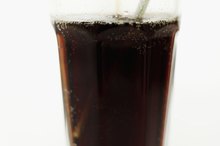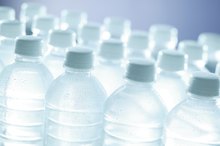What does fact checked mean?
At Healthfully, we strive to deliver objective content that is accurate and up-to-date. Our team periodically reviews articles in order to ensure content quality. The sources cited below consist of evidence from peer-reviewed journals, prominent medical organizations, academic associations, and government data.
The information contained on this site is for informational purposes only, and should not be used as a substitute for the advice of a professional health care provider. Please check with the appropriate physician regarding health questions and concerns. Although we strive to deliver accurate and up-to-date information, no guarantee to that effect is made.
How to Naturally Reduce Visceral and Subcutaneous Abdominal Fat
You may think that all fat is created equal however that is not the case. Subcutaneous fat is what you pinch at around your stomach, hips, thighs and glutes. Subcutaneous fat is considered less dangerous than visceral fat, which is found inside your body, around your abdomen and internal organs. Visceral fat increases your risk of serious health complications and diseases such as diabetes, heart disease and cancer. Speak to your doctor to determine the right diet and exercise plan that best suits your current health condition.
Reduce the amount of calories in your diet. One pound of fat equals 3,500 calories; therefore, in order to lose 1 lb. of fat a week you must cut out 500 calories a day from your normal, needed amount. Cut back on fast food and unhealthy snacks like chips, cookies, doughnuts and candy.
How to Lose 10 Pounds in Three Days
Learn More
Eat a healthy, well-balanced diet full of fruits, vegetables and whole grains.
Pay attention to portion sizes. Choose a small-sized drink over a large one when out at a restaurant or coffee shop. At home, pay attention to nutrition labels as these explain how much calories, sodium, sugar and fat are found in one serving of food. If you are unsure what makes up a portion size, place your meal on a smaller plate.
Will Drinking Water Before Bed Help You Lose Weight?
Learn More
Cut back on sugary drinks 2. Drinking one 20-oz. bottle of soda a day may pack up to 26 lbs. of fat on your body in one year. Replace sodas, lattes and energy drinks with water. Add a squeeze of lemon or lime if you don't enjoy the taste of water or try seltzer water.
Exercise. The Centers for Disease Control and Prevention recommends that adults age 18 to 64 participate in 150 minutes of moderately-intensive physical activity a week 3. Go to the gym, ride your bike or go swimming. The organization also recommends strength-training activities at least two days a week.
Stress less 4. Chronic stress puts your body in "fight or flight" mode, thus reducing your metabolism and increasing the amount of fat your body stores. It may also cause you to overeat. Find ways to relieve stress and tension. Learn deep breathing techniques, take up yoga or write in a journal.
Sleep more 5. Not getting an adequate amount of rest may slow down your metabolism and lead to weight gain. Get at least seven to eight hours of sleep a night.
Related Articles
References
- Harvard Medical School Family Medical Guide: Abdominal Fat and What to Do About It
- NY Daily News; Addictive Qualities of Soda and Sugary Drinks Contributing to Childhood Obesity Epidemic; Dan Moore and Bill Manville; September 2009
- Centers for Disease Control and Prevention: How Much Physical Activity do Adults Need?
- HelpGuide: Stress Management
- Brigham Young University: Benefits of Sleep
Writer Bio
Susan Diranian is a writer for various online publications and magazines, specializing in relationships, health, fashion, beauty and fitness. She holds a Bachelor of Arts in English with a concentration in nonfiction writing and editing.









